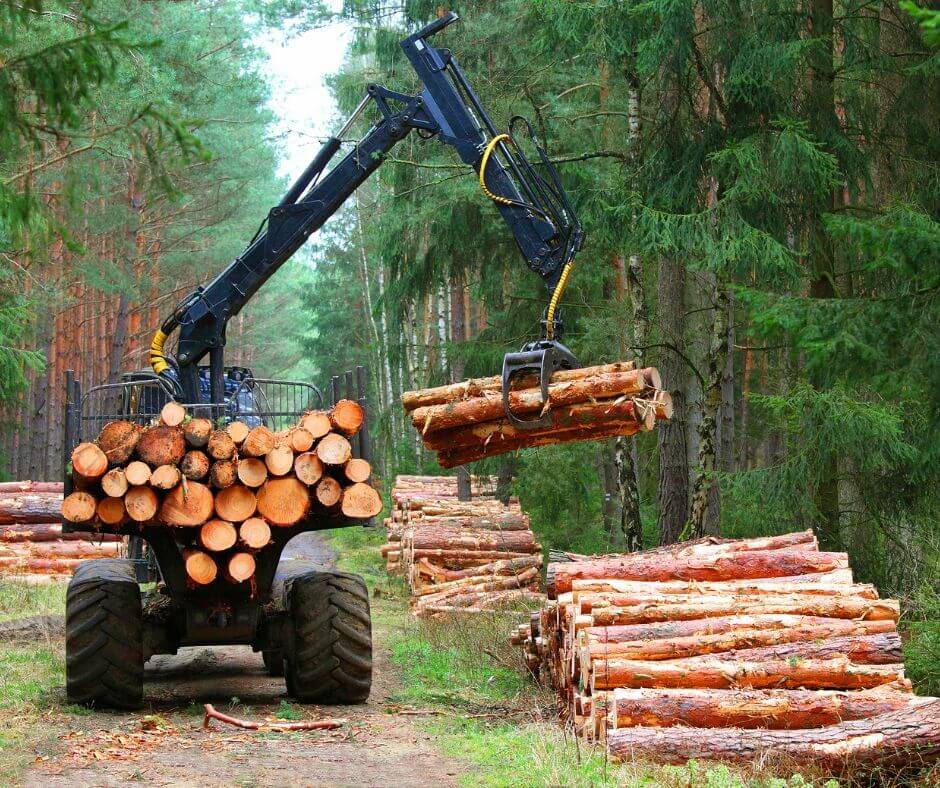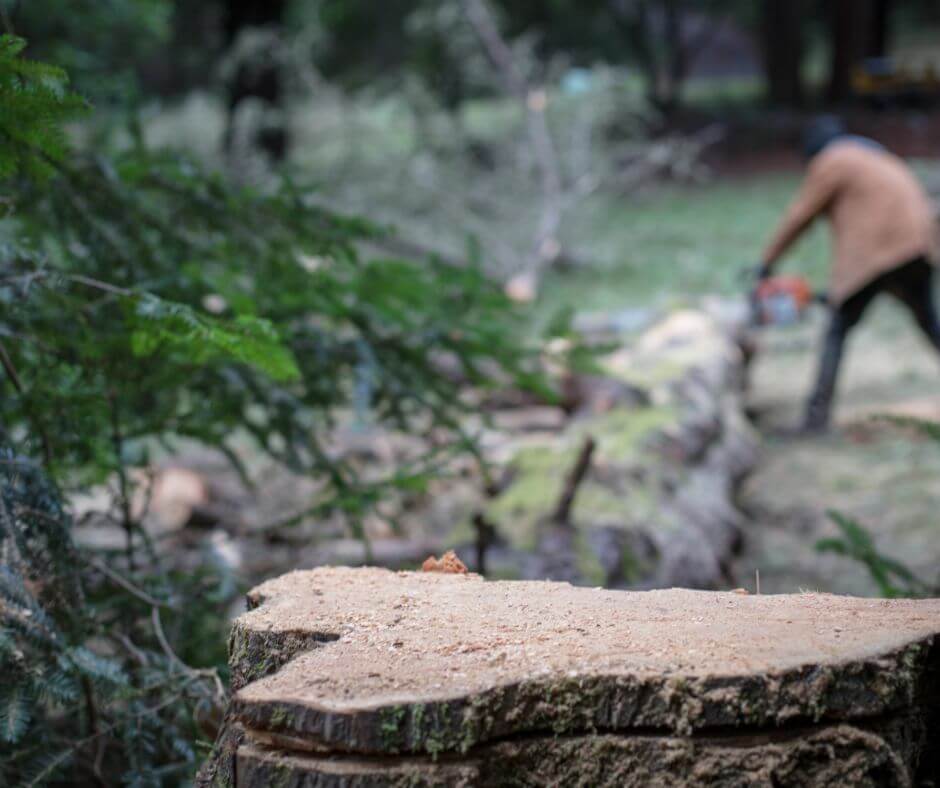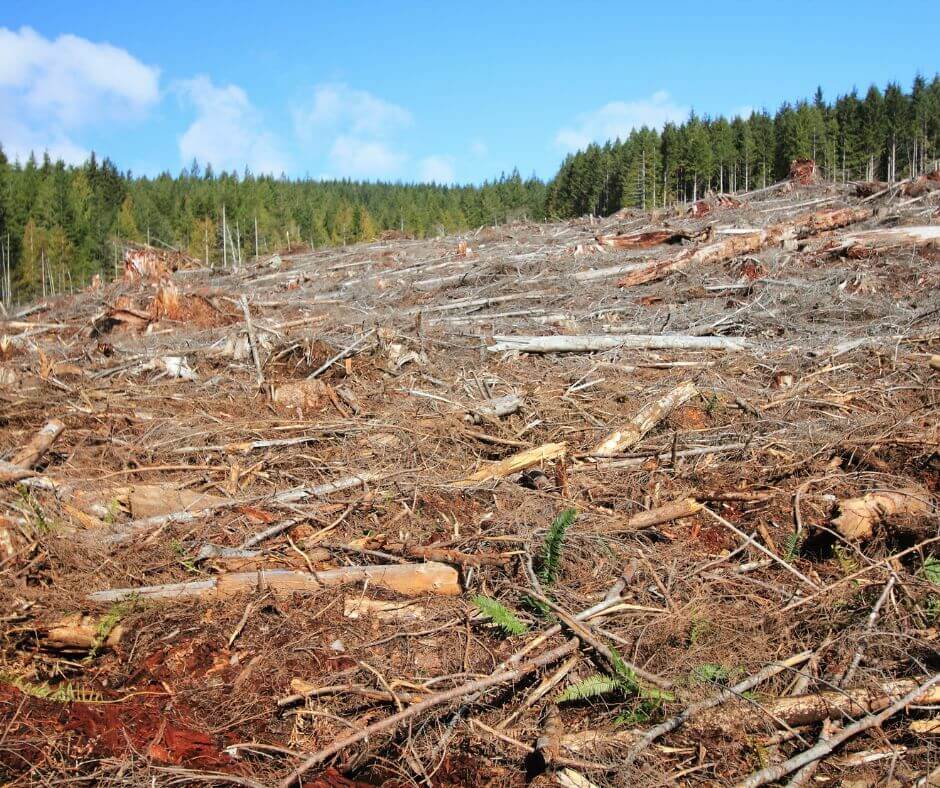What Are The Benefits of Select-Cutting Timber?
Many landowners who own hunting land in Michigan may harvest timber from their property at some time, whether it’s on a regular basis as a source of income or as part of a periodic management strategy. It’s a given that logging activities on your property must be planned meticulously, logistically, and long-term in order to minimize environmental damage.
With that in mind, let’s discuss some of the most fundamental advantages and disadvantages of harvesting timber on your Michigan hunting land.
The Pros of Harvesting Timber On Your Michigan Hunting Land
 Harvesting and selling some of your timber may, like leasing land to a farmer, be a substantial source of income: Ownership of property may be made more inexpensive and your own hunting grounds can be subsidized by the economic aspect in some situations.
Harvesting and selling some of your timber may, like leasing land to a farmer, be a substantial source of income: Ownership of property may be made more inexpensive and your own hunting grounds can be subsidized by the economic aspect in some situations.
As part of land management, timber-cutting can be used to reduce overgrowth, promote early-successional shrubland, treat insect outbreaks, and more. In order to preserve the mosaic of older and younger woods as well as lots of edge habitat, many game species, such as whitetail deer and upland birds, prefer well-planned selective logging.
Smaller-scale benefits, such as stockpiling firewood or clearing a place for a cabin and obtaining building supplies, can also be gained by harvesting part of your timber.
The Cons of Harvesting Timber On Your Michigan Hunting Land
 When it comes to hunting, the incorrect kind of wood harvest might have a long-term detrimental effect on your land. As a result of clearing, animals may lose crucial habitat and microclimates may shift to the detriment of the surviving plants. For cutting, skidding, chipping, and other logging-related activities, a large area must be prepared for roads and landings as well.
When it comes to hunting, the incorrect kind of wood harvest might have a long-term detrimental effect on your land. As a result of clearing, animals may lose crucial habitat and microclimates may shift to the detriment of the surviving plants. For cutting, skidding, chipping, and other logging-related activities, a large area must be prepared for roads and landings as well.
Timber harvesting at the incorrect season can have a far greater impact on the environment than harvesting it at the right time. For example, on spring’s soft, mucky terrain, it can cause deep, long-lasting ruts and considerable ground cover damage.
Specific Benefits of Select-Cutting Timber on Your Michigan Land
It Boosts Forest Regeneration
Regeneration (the process by which new trees and other plants are created) is facilitated by sustainable timber harvesting because space in the canopy and understory is liberated. New trees and other plants can germinate, take root, and thrive in the understory due to the increased availability of light, water, and nutrients.
Enhances the habitat for local wildlife
 Coarse woody debris (CWD), or dead trees that have fallen to the ground, enhances wildlife habitat by providing more food, cover, and shelter. Downed and/or decaying CWD may contain a variety of insects, which are an important feeding source for many animal species. The CWD may also be home to small animals, reptiles, and amphibians. There is a wide range of animal species that rely on fallen trees, branches, and brush heaps for shelter and safety.
Coarse woody debris (CWD), or dead trees that have fallen to the ground, enhances wildlife habitat by providing more food, cover, and shelter. Downed and/or decaying CWD may contain a variety of insects, which are an important feeding source for many animal species. The CWD may also be home to small animals, reptiles, and amphibians. There is a wide range of animal species that rely on fallen trees, branches, and brush heaps for shelter and safety.
Enhances the value of the timber by enhancing its quality
Timber may be collected as frequently as every 10 to 15 years if trees are selectively identified and the harvest is done responsibly and ethically. As a result, the timber stand’s health and production are improved while also providing a steady source of income. The removal of diseased or over-mature trees, as well as the reduction of the stand’s stocking levels, may all be accomplished through the employment of timber harvesting as a forest improvement strategy.
Increases The Biodiversity of the Habitat
Selective harvesting of trees marked for harvest can be used to alter the overall composition of a stand. It is possible to create a habitat for more variety of animals if a wide array of native tree species are present at different ages.
Increases productivity and efficiency
Due to increasing competition for space, water, sunshine, and other important nutrients, thick timber stands develop less productively and effectively. Sustainable wood harvests provide for greater access to nutrients and space, resulting in more efficient growth of the trees left in the stand after the harvest.
Provide the wood that is needed for a wide range of consumer goods
The supply of wood and paper that we consume on a daily basis is contingent on the continuing harvesting of trees. As a consequence of research and teaching on sustainable forest management techniques, the United States has more forests than it had 50 years ago, despite an increase in the country’s need for and collection of timber over that period.
Be Responsible With Your Timber Harvesting
![]() There is a lot to research on how to plan and carry out a timber harvest in a responsible way, but here are a few general things to think about:
There is a lot to research on how to plan and carry out a timber harvest in a responsible way, but here are a few general things to think about:
- Find out as much as you can about any logging contractor you want to hire to make sure they are skilled and reliable.
- Plan harvests for times when they won’t hurt the land as much, like in the winter when the ground is hard, frozen, and preferably covered in snow.
- Tell your neighbors before you cut down trees.
- Think about hiring a forester to help you manage your timberland. This can make a big difference in making sure your hunting property is sustainable, profitable, and good for the environment.
Although a poorly planned and/or excessive harvesting can result in short-term profits from your timber, a more selected and spread-out cutting strategy can provide a steady source of income for decades to come.
If you are interested in investing in Michigan hunting land for sale, Michigan timberland for sale, or any other type of farm or vacant land for sale in Michigan, contact one of Michigan Whitetail Properties Land Specialists today. Our land specialists are experts in hunting, farming, and taming Michigan land and will help you select the best property for your needs. Contact us today to see how we can help!
 There is a lot to research on how to plan and carry out a timber harvest in a responsible way, but here are a few general things to think about:
There is a lot to research on how to plan and carry out a timber harvest in a responsible way, but here are a few general things to think about: